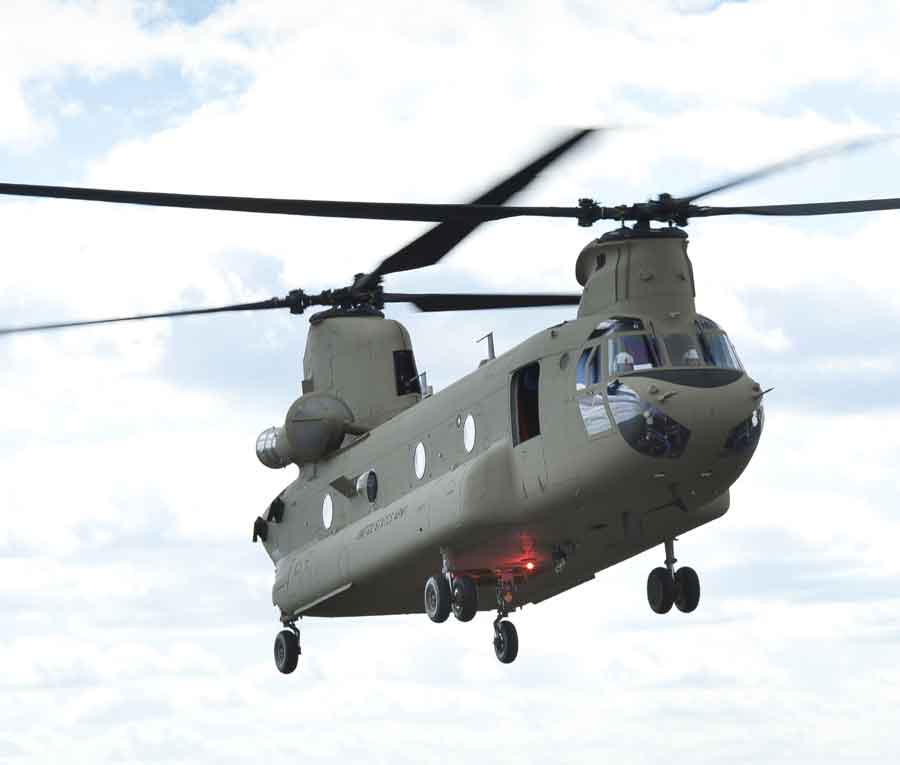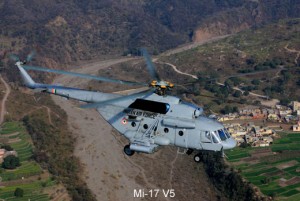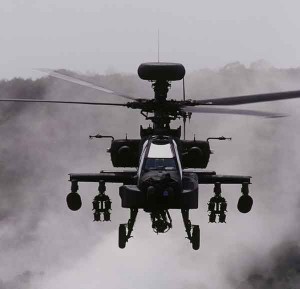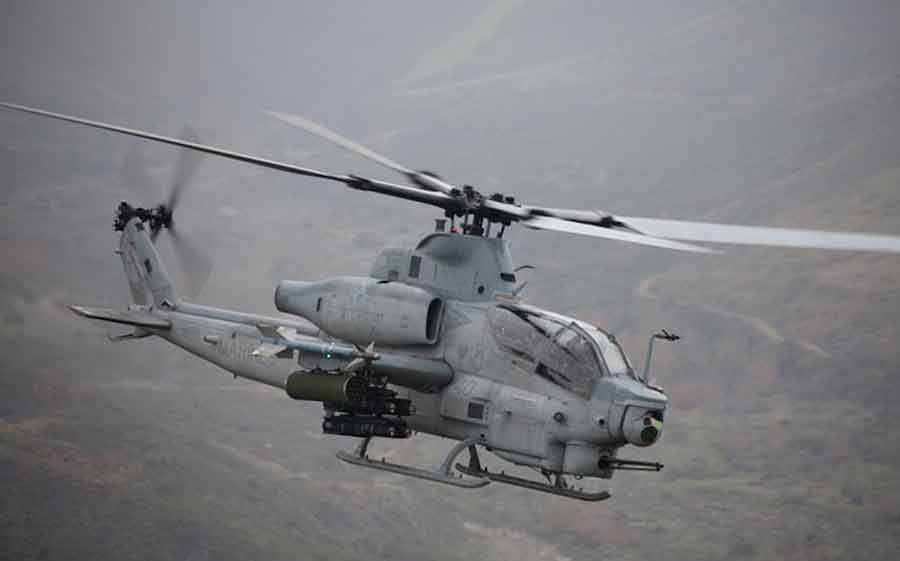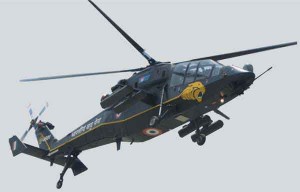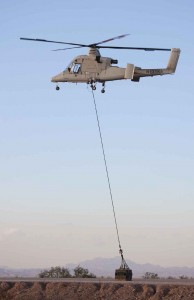While jet fighters are in their fifth generation, helicopters are still languishing with the same old airframes for the last several decades, with mostly upgrades to their credit. The APACHE AH-64E Block-III is a vivid example of the same even though 26 new technologies have been incorporated in the upgraded version. However, the new generation helicopter platforms are now featuring the latest advances in aeronautics giving military helicopters improved flight performance as well as weapon systems with incremental technological and technical upgrades. This offers the new generation machines unprecedented capabilities – lighter and stronger materials of construction, increased autonomy, more powerful engines, reduced acoustic signatures, more accurate navigation systems, enhanced data acquisition and protection systems, and more effective weapons and munitions. Designed as weapon systems integrating multiple functions, helicopters will have to become truly modular, making it possible to change part of the system without affecting overall integrity. The concept of modularity is likely to increase, especially with the emergence of multi-role machines.
A number of countries are today looking at acquiring MRH due to the changing nature of conflict…
The combat helicopters can be classified into two categories -the armed helicopters/gunships and the modern day dedicated Attack Helicopters (AH). Both are military helicopters, wherein the armed helicopters are normal utility, cargo or reconnaissance modified with weapon mounts for defence against and attacking targets on the ground. The purpose of modification could be field expediency during combat as well as the need to maintain helicopters for missions that do not require weapons. In fact, these are basically the Multi Role Helicopters (MRH) which can transport troops as well as carry basic armaments in terms of machine guns/rockets/missiles depending on the type of mission required to be undertaken.
The AH, on the other hand, is specifically designed and built to carry weapons for engaging targets on ground and air with special emphasis on anti-tank role. The weapons include machine guns, cannons, rockets and guided missiles for air-to-ground and air-to-air engagement. Modern day AH have two main roles of providing direct and accurate close air support for ground troops – amply being demonstrated in Afghanistan and anti-tank role to destroy enemy armour. Specialised armed helicopters flying from ships at sea are equipped with weapons for anti-submarine and/or anti-shipping operations. A number of countries are today looking at acquiring MRH for their armed forces due to the changing nature of conflict, specially related to counter insurgency and counter terrorist operations. A befitting example is the employment of modified Black Hawks with stealth features successfully by the US Special Forces in Operation Neptune Spear (Geronimo) to take out Bin Laden from Pakistan.
The concept of combat helicopters evolved with the French during the Algerian and first Indo-China Wars (1954-1962) in the form of rotary wing platforms modified as armed helicopters. The first use of armed helicopters by USA in large-scale combat operations was in Vietnam. Till then, military helicopters were used for troop transport, observation and casualty evacuation. These helicopters while flying missions often came under heavy fire resulting in the need for arming them. The Huey UH-IC troop transporter was modified with stub wings attached to its fuselage and fitted with machine guns and rockets. The other helicopters modified as armed helicopters were the Sikorsky and Chinook CH-47. This was a quantum jump from the manned door-fitted machine guns of the earlier versions of armed helicopters.
A number of countries are today looking at acquiring MRH for their armed forces due to the changing nature of conflict…
During the 1960s, the Soviet Union also felt the need for armed helicopters and modified the military MI-8 troop transporter helicopter with weapon pods for rockets and machine guns. This subsequently led to the development of a dedicated armed helicopter/gunship – the MI-24 which saw action in Afghanistan during the 1980s. In our context, we had earlier MI-8 and Ranjeet (modified Cheetah helicopter), fitted with machine guns fired from side doors. Presently the MI-17 and Lancer (Cheetah) are modified for armed role capable of mounting guns and rockets. In fact the 80 X MI-17Vs now under acquisition from Russia, are already modified for armed role including fitment of missiles.
With the armed helicopter/gunship concept battle proven, began the development of dedicated AH with the primary aim of engaging tanks. The late 1970s/early 1980s saw the advent of the AH like the American Apache AH 64A and upgraded Huey Cobra, the Soviet MI-24 and the Italian A-129 Mangusta. While some questioned the relevance of dedicated AH due to increased cost over gun-ships, the 1991 Gulf War put these doubts at rest. Fleets of Apaches and Huey Cobras dominated Iraqi armour in the open desert during the war. In fact, the Apaches fired the first Hellfire missiles destroying early warning radars and SAM sites. The deep attack role and independent operations by AH did come into question after a failed mission during the attack on Karbala in the 2003 Gulf War but this was purely attributable to flawed tactical employment which was corrected in subsequent operations. The Soviet operations in Afghanistan from 1979 to 1989 saw the emergence of the MI-25/MI-35 AH, a variant of the MI-24. Closer home we have in our inventory the Russian MI-25/MI-35 AH, which is now vintage, though a certain amount of upgrading has been carried out to enhance their night operations capability. In fact, during the Kargil conflict in 1999, the Indian Army and Air Force felt the need for an AH that could operate at those heights with ease. This led to the development of the Light Combat Helicopter (LCH) which would be capable of operating at high altitudes.
Combat Helicopter Armament Systems
The most common weapons are machine guns and rockets for use against soft targets on the ground and for self defence while transporting troops over conflict areas. While armed helicopters have mostly used direct firing weapons with bombs considered more appropriate for fixed-wing aircraft, some armed helicopters have delivered heavy bombs successfully. The US army used the Chinook helicopters for dropping bombs to clear landing zones and saturate base camps and infiltration routes during the Vietnam War. Armed helicopters today can also be fitted with mine dispenser/mine clearance systems. The system is composed of racks on both sides of the helicopter for up to 40 canisters each containing six anti-tank and one anti-personnel mine. The rapid air-borne mine clearance system is another armament sub-system where the intended targets are naval mines. The system consists of a single modified 30mm cannon for targeting and neutralising mines in shallow waters and is fitted on the Black Hawk helicopters of the US Navy.
The advent of fire-and-forget missiles is the greatest asset of the AH which enhances its lethality.
On the other hand, the AH carries guns, rockets, air-to-ground as well as air-to-air guided missiles. The gun, normally a 20mm/30mm caliber weapon located in the chin of the helicopter, provides suppressive ground fire while the AH carries out its anti-tank mission. The unguided aerial rockets complement the short-range gun and the long-range anti-tank missiles. The rockets are cheap and effective as an area weapon. The rockets are also used to attack soft ground targets such as depots and anti-aircraft gun sites. In emergency situations they could also be used in the air-to-air role. Today, there are rockets with sub-munitions warheads that can disperse a number of grenades/bomblets over target areas.
The air-to-air missile system is basically to counter the threat from other AHs and is more of a defensive armament system. The anti-tank guided missile is the main punch of the AH. The advent of fire-and-forget missiles is the greatest asset of the AH which enhances its lethality. The Hellfire missile on the Apache AH is in this class. The carriage of the type of armament will depend on the mission and area of operations. Combat helicopters have to be fitted with counter-measures suite to include radar and missile detectors, infra-red jammers, chaff and flare dispensers, depending on the degree of threat perceived for their own survival.
Modern State-of-the-Art AH
The modern day AH has been further refined. The American Apache AH 64 Guardian Block III demonstrates many of the advanced technologies being considered for deployment on future AH. The Apache AH 64E Block-III is an upgraded version of the AH 64D and is the most sophisticated AH in the world today incorporating 26 new technologies, mainly related to the engine, rotor systems and avionics. Its armament consists of a 30mm cannon, 70mm rockets, Longbow Hellfire missiles and stinger/sidewinder air-to-air missiles. It has the Honeywell integrated helmet and display sighting system with state-of-the-art counter-measure sensors. In the trials concluded last year, the Apache AH 64D Block-III scored over the Russian MI-28 and will replace the current ageing fleet of MI-25/35 AH.
The Russians have also developed the state-of-the-art AH in the Ka-50 (Hokum) and MI-28 (Havoc). This decision was taken after their experience in Afghanistan with the MI-24 AH, which was basically an armed helicopter and hence not suited for a typical AH role. The Ka-50 is the world’s first coaxial, single-seat AH. The MI-28, on the other hand, is roughly equivalent to the Apache Longbow but without the command-and-control link up. The MI-28 has a 30mm chain gun, Ataka anti-tank missiles and pods for S-8 and S-13 rockets. The Ataka is an improved version of the Vikhr anti-tank guided missile fitted on the MI-25/MI-35 AH. It also has in its armament the Igla/Vympel air-to-air missiles. The other dedicated AH operating in the environment are the Italian Augusta Westland AW129 Mangusta, Bell Helicopter’s Viper, the latest version of Huey Cobra, Eurocopter’s Tiger and the latest formidable entry the Chinese Z-10 Zhising. As per reports, China is also in the process of developing another AH, the Z-19, the prototype having flown in December 2010.
The MI-28 is roughly equivalent to the Apache Longbow but without the command-and-control link up.
Multi-Role Concept
The multi-role concept for helicopters evolved during the Vietnam War but was subsequently taken over by the requirement of dedicated AH as an anti-armour/anti-tank weapon system. However, the nature of war has undergone a major change in the last few years with emphasis on non-conventional operations. World over the armed forces are now seriously looking at this concept and the requirement of MRH especially for counter-insurgency and counter-terrorist operations. The MRH is basically a utility/troop carrying helicopter with inbuilt provisions for fitment of armament. The MRH can be fielded for roles such as ground attack, air assault, cargo, surveillance and troop transport. The size of such helicopters is generally between that of cargo and light observation helicopters. The basic armament would generally be restricted to guns and rockets. However, air-to-ground and air-to-air missiles are also reported to be a part of armament of some MRH primarily putting them in the class of armed helicopters. All these helicopters are also fitted with self-protection suite with missile approach warning system, threat warning equipment and chaffs/flare dispensers. Some of the MRH in service in different countries are US marine Bell UH-IN Twin Huey, Augusta Westland AW-139, German Army’s NH-90, US Army’s UH-60 Black Hawk and Russian MI-17(all versions). With its experience in Afghanistan, the US has embarked on a programme for developing four variants of different sizes of MRH. In our context, we have the MI-17 IV/V, Navy’s Sea King and the Advanced Light Helicopter (ALH) in this category.
Indian Scenario
The ALH, also known as the Dhruv, is already in service with the armed forces. The weaponised version of the ALH called the ALH Weapons Systems Integrated (ALH WSI) or RUDRA, has formally been handed over to the army in February this year and induction is likely to commence soon. The RUDRA is fitted with the more powerful Shakti engine being manufactured by Hindustan Aeronautics Ltd (HAL) in collaboration with French Turbomeca. This engine has also been evaluated for high altitude operations on the ALH. Basically, the RUDRA is a new generation armed helicopter duly modified for fitment of all types of weapon sub-systems carried by a modern day AH. The RUDRA has a 20mm gun turret, 70mm rockets and the Mistral air-to-air missile. However the anti-tank missile Helina, the air version of NAG being developed by the Defence Research and Development Organisation (DRDO) is still not ready. Once developed, the Helina will be a fire-and-forget missile with a seven-kilometre range and would compare with the Hellfire missile. To meet the interim requirement the Army has already carried out trials for a suitable anti-tank missile and in contention are the French PARS-3 and Israeli SPIKE-ER. Decision by the MoD on the selection is awaited.
The HAL has also embarked on the development of the Light Combat Helicopter (LCH). The LCH employs the technology of the ALH except the fuselage which is streamlined and suitably modified for tandem-seating of pilot and weapons system operator with adequate armour protection. The weapons and systems will be similar to the RUDRA. This approach has an inherent advantage as most of the critical systems have been proven either on the ALH or the RUDRA. An indigenous AH like the LCH is a step in the right direction as it can be tailored to suit the terrain and climatic conditions of our area of operations, especially high altitude operations. The first flight of LCH took place on March 29, 2010, and the AH is likely to enter service by 2014. Once fielded, the LCH should compare well with Eurocopter’s Tiger, Italian Mangusta and Bells Huey Cobra as it is in the same weight category.
The ALH, also known as the Dhruv, is already in service with the armed forces.
In the MRH class, the Navy is already looking at replacing its vintage Sea King fleet. In the fray are the US S-70 Bravo and Eurocopter’s NH-90, though this process has been stalled for now. The HAL is also looking at the development of a 10-12 tonne class of MRH for the requirement of the armed forces in a joint venture with a foreign manufacturer. However, no progress has been made in this project so far. The Army is keen to acquire this class of helicopters and has suitably called it the Tactical Battlefield Support Helicopter (TBSH). This will enhance its lift capability in the Tactical Battle Area as well as be the frontline helicopter for Special Operations.
Future Development
While jet fighters are in their fifth generation, helicopters are still languishing with the same old airframes for the last several decades, with mostly upgrades to their credit. The APACHE AH-64E Block-III is a vivid example of the same even though 26 new technologies have been incorporated in the upgraded version. However, the new generation helicopter platforms are now featuring the latest advances in aeronautics giving military helicopters improved flight performance as well as weapon systems with incremental technological and technical upgrades. This offers the new generation machines unprecedented capabilities – lighter and stronger materials of construction, increased autonomy, more powerful engines, reduced acoustic signatures, more accurate navigation systems, enhanced data acquisition and protection systems, and more effective weapons and munitions. Designed as weapon systems integrating multiple functions, helicopters will have to become truly modular, making it possible to replace components without affecting overall integrity. The concept of modularity is likely to increase, especially with the emergence of multi-role machines.
The HAL has also embarked on the development of the Light Combat Helicopter (LCH).
In terms of data acquisition – day/night observation and detection capabilities will increase and become more diversified specially in respect of information-sharing and cooperation with other aircraft and UAVs. Target engagement capabilities with regard to weapon range and precision is likely to remain the focus of future development. With sub-conventional operations gaining ascendency around the world, helicopter survivability will assume greater significance. Advances in stealth, such as reductions in radar and acoustic signatures, offer major results in this area, as does the development of early detection/jamming counter-measure capabilities. Aerial navigation today has become an art which nears perfection. External navigation aids and onboard systems help navigate an aircraft over thousands of miles with such accuracy that could only be imagined a few decades ago. Pilots today have various navigation aids that help them take-off, fly and land safely. These include the Inertial Guidance System, Long Range Navigation (LORAN), GPS, Weather Radar, Terrain Collision Avoidance System (TCAS) and the Terrain Awareness Warning System (TAWS). The TAWS is very significant for the combat helicopters which most of the time have to fly very low in the Nap-of-the-Earth mode during operations.
Some of the above technologies are already being incorporated in the development of Eurocopter’s X2 and X3 and Sikorsky’s X2 co-axial compound helicopter as technology demonstrators. The main emphasis is on speed, stealth, reliability and survivability. In fact, in its demonstrative flight Sikorsky’s X2 achieved a speed of 287mph a major leap from the current standard helicopter speeds. Its military version the Sikorsky ‘S-97 Raider’ is stated to be the future light tactical helicopter of the US Military. Finally, the development of innovative concepts along the lines of V-22 Osprey tilt rotor technology, could generate fresh momentum in the utility/logistics domain. The V-22 is already deployed in Afghanistan and was instrumental in the rescue of a downed US pilot in Libya last year. The US is looking at a joint heavy-lift Rotorcraft platform designed to enter service by 2030.
Another area of future development is helicopter UAVs. Two avenues are already being explored and implemented in different countries – UAV-helicopter cooperation and development of rotary wing UAVs. Lockheed Martin’s K-MAX helicopter UAV is currently deployed in Afghanistan for logistics support and has proved to be successful. It has been able to fly in adverse weather wherein manned helicopters could not fly – armed forces may be looking at the armed version of the K-MAX.
Conclusion
Combat helicopters whether armed, dedicated AH or MRH will be extremely relevant in future conflicts especially in sub-conventional operations. The battle-proven Apaches from their anti-tank role in Iraq were employed in support of the infantry against the Taliban in Afghanistan. The MRH will continue to play a pivotal role in future conflicts, more so in Special Operations. With the RUDRA and the LCH being indigenously developed by HAL and likely to enter service in the coming years, the Indian armed forces will have formidable state-of-the-art combat helicopters in their inventory – a weapon system that will have capability to turn the tide in battle.




